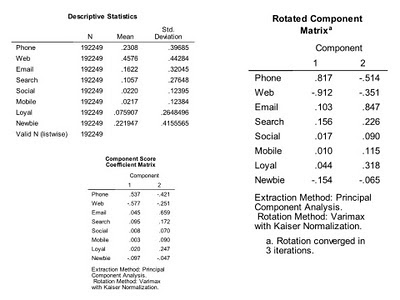Free Content: A Few Observations About Modern Catalog Marketing
- 2,500 Blog Subscribers, 2,700 Twitter Followers
- I Project 700 Individuals Will Read The Blog Post
- 110 Downloads
- 2,500 Blog Subscribers, 2,700 Twitter Followers
- I Project 700 Individuals Will Read The Blog Post
- 59 Clicks to Amazon, 6 Clicks to Barnes/Noble
- 24 Requests for a Free Copy (recall the 48 hour free copy offer last week).
- 20 Purchases in 4 Days (Projects to Sales of 200 to 500, life-of-book).
- 2,500 Blog Subscribers, 2,700 Twitter Followers
- I Project 700 Individuals Will Read The Blog Post
- 9 Clicks to Amazon, 0 Clicks to Barnes/Noble. 5 of 9 clicks outside of United States.
- 2 Purchases in 3 Days (Projects to Sales of 10 copies, life-of-book, based on prior tests at a $75 price point).
By the way, if we evaluate short-term benefits on sales generated, then 2*$95 > 20*$0.99 > 110*$0.00. Just saying ...
Most important ... pay attention to the "funnel", or what I call "low probability" events.
- 2,500 blog subs and 2,700 Twitter followers.
- About 200 actions from at least 3,000 and probably closer to 3,500 unique individuals.
- Around 25 purchases.
- Maybe 6% of individuals take action, with maybe 15% of the 6% (about 1% of the total audience) purchasing something.









